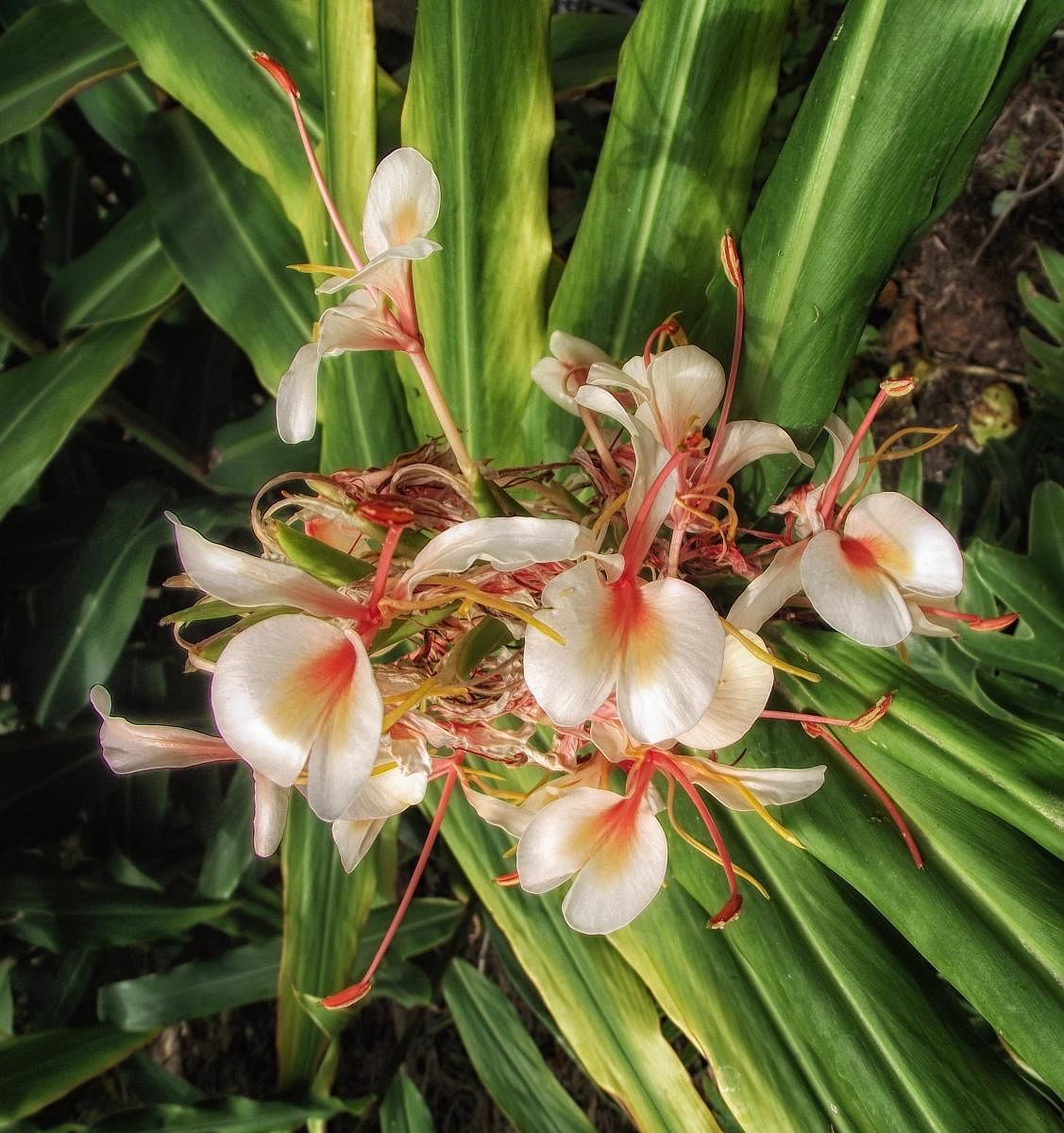
Ajji began each day by gathering flowers as an offering to God. She would enter the garden after her morning ablutions to gather flowers and a few sprigs of greens for her cooking. She prepared her own meals until she fell ill. She was in her late eighties then, and I became her caregiver. Even though I knew her daily routine, preferences, likes and dislikes, I learned the most during the few years when I was taking care of her.
Ajji is my husband’s grandmother. I would call her Paati. She grew up in a village, led a simple life, and retired as a teacher. Life was not kind to her in many ways, but she faced every challenge with an indomitable spirit.
Paati looked upon every plant with reverence. She looked forward to the first rain of spring and would touch the wet ground in salutation. Each plant received her full attention when she was in the garden. She would touch the leaves, bark, and flowers with tenderness. She would look at them with admiration, and her delicate hands would clasp in a greeting. She saw God in them. When she gathered flowers, she’d leave some behind on the plant. She’d say that the butterflies and bees needed them more than God.
In January, the tender honge leaf (Pongamia pinnata) was the cucumber slice for her weary cataract eyes. She would make me gather the honge flowers off the ground and spread them around the plants because they were nutrient-rich. Hedychium coronarium, also known as Suruli Sugandhi, was Paati’s favourite flower. It has huge, oval-shaped leaves and fragrant white blooms. Paati referred to it as Nagagandi. When I asked her why, she indicated how the stamen resembles the hood of a snake. She adored the Gokarna/muthu mallige, also known as Pseuderanthemum reticulatum, which bloomed through spring and summer. She would gather them with her feeble fingers and weave them into a garland. She would call it Magha Mallige, for it bloomed in abundance during the Hindu month of Magha. I learned from her how common names provide us insights into the language, culture, and beliefs of the society in which we live.
She rarely discarded the skins of vegetables. She would prepare chutney from the peeled skin of ridge gourd and chayote. Even the pumpkin’s soft inner flesh was utilised while grinding batter for dosey or adey. On rainy days, she would prepare tambuli, a Karnataka delicacy, by cooking Indian Borage, also known as Doddapatre, along with betel leaves.
The decaying portions of vegetables or fruits, as well as the seeds, were all discarded beneath the plants in the garden. There was no such thing as a garbage bin for wet waste back then at home. When she learned that the corporation wants us to segregate home waste, she asked why people were tossing food into the trash. “All organic waste must be returned to bhoomi,” she would remark. For her generation, sustainable living was a way of life, whereas it is an alien concept for city inhabitants today. Her evening activity consisted of using homegrown cotton to create lamp wicks. Two cotton plants grew in the garden for her. She would gather the cotton, segregate the seeds, and store them. Additionally, she would create garlands by twisting the cotton into little buds.
After her passing, the plants, as if on cue, withered away as well. When she fell ill and was unable to work with cotton, she spent her evenings in the garden watching us water the plants and the children play. I vividly recall the last time she stepped into the garden. She knew she wouldn’t come back to sit there again. Her health deteriorated, and she died many Decembers ago at the ripe old age of 93.
For my grandmother, the garden was a source of joy, a form of therapy, and a way of connecting with the natural world. She found peace and calm in the quiet moments she spent in the garden. It was a place where she could escape the stress of failing health and connect with something larger than herself. As I sit in the December garden and ruminate about the past, I realise that a garden is not just a collection of plants but also a collection of colourful memories. Thank you, Suseela Paati. Until next time, happy gardening.
Motley Garden is your monthly kaleidoscopic view into a sustainable garden ecosystem.
The author believes that gardening is not just about plants and how to nurture them. It is also about bees, butterflies, insects, flies, and bugs that make it their home. She is on social media as @neelavanam